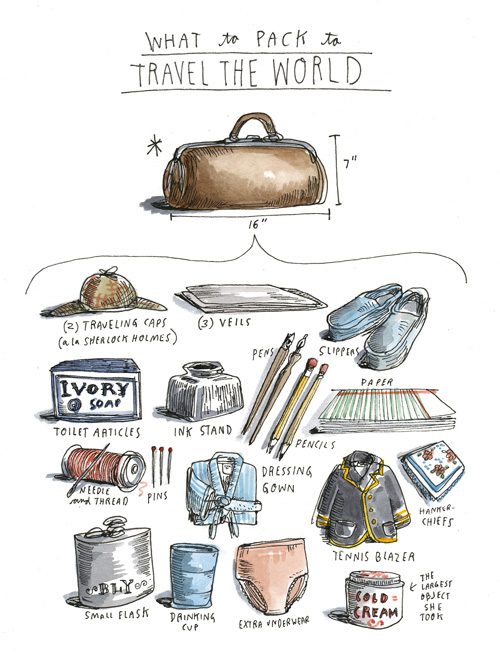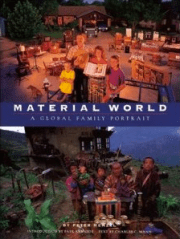 We’re longtime fans of photojournalist Peter Menzel, whose visual anthropology captures the striking span of humanity’s socioeconomic and cultural spectrum. His Hungry Planet and What I Eat portrayed the world’s sustenance with remarkable graphic eloquence, and today we’re turning to some of his earliest work, doing the same for the world’s shelter: Material World: A Global Family Portrait — an engrossing visual time-capsule of life in 30 countries, captured by 16 of the world’s leading photographers.
We’re longtime fans of photojournalist Peter Menzel, whose visual anthropology captures the striking span of humanity’s socioeconomic and cultural spectrum. His Hungry Planet and What I Eat portrayed the world’s sustenance with remarkable graphic eloquence, and today we’re turning to some of his earliest work, doing the same for the world’s shelter: Material World: A Global Family Portrait — an engrossing visual time-capsule of life in 30 countries, captured by 16 of the world’s leading photographers.
In each of the 30 countries, Menzel found a statistically average family and photographed them outside their home, with all of their belongings. The result is an incredible cross-cultural quilt of possessions, from the utilitarian to the sentimental, revealing the faceted and varied ways in which we use “stuff” to make sense of the world and our place in it.
Freelancing in Somalia during their civil war and in Kuwait right after the first Bush War, I had some rather intense experiences that made life in the U.S. seem rather shallow and superfluous. Sitting in my office early one morning, listening to NPR, which is the way I like to start every day, I heard an amazing piece on the marketing of Madonna’s autobiographic book called SEX. The book was a sensation in the U.S. The radio report ended with Madonna singing, ‘I am living in a material world and I am just a material girl,’ or something close. I thought it was spot on. We live in an idiotic capitalist self-indulgent society where the sex life of a pop star is more important than impending starvation, land mines and child soldiers in Africa, or more interesting than the world’s biggest man-made natural disaster in oil fields of the Middle East.” ~ Peter Menzel

It’s common for men in this West African country to have two wives, as 39-year-old Soumana Natomo does, which increases their progeny and in turn their chance to be supported in old age. Soumana now has eight children, and his wives, Pama Kondo (28) and Fatouma Niangani Toure (26), will likely have more. How many of these children will survive, though, is uncertain: Mali’s infant mortality rate ranks among the ten highest in the world. Possessions not included in this photo: Another mortar and pestle for pounding grain, two wooden mattress platforms, 30 mango trees, and old radio batteries that the children use as toys.
Image copyright Peter Menzel via PBS | www.menzelphoto.com

The nine members of this extended family live in a 3-bedroom, 600-sq-foot dwelling in rural Yunnan Province. They have no telephone and get news through two radios and the family’s most prized possession, a television. In the future, they hope to get one with a 30-inch screen as well as a VCR, a refrigerator, and drugs to combat diseases in the carp they raise in their ponds. Not included in the photo are their 100 mandarin trees, vegetable patch, and three pigs.
Image copyright Leong Ka Tai

Rick and Pattie Skeen’s 1,600-sq-foot house lies on a cul-de-sac in Pearland, Texas, a suburb of Houston. Rick, 36, now splices cables for a phone company. Pattie, 34, teaches at a Christian academy. Photographers hoisted the family up in a cherry picker to fit in all their possessions, but still had to leave out a refrigerator-freezer, camcorder, woodworking tools, computer, glass butterfly collection, trampoline, fishing equipment, and the rifles Rick uses for deer hunting, among other things. Despite their possessions, nothing is as important to the Skeens as their Bible — an interesting contrast between spiritual and material values.
Image copyright Peter Menzel via PBS | www.menzelphoto.com
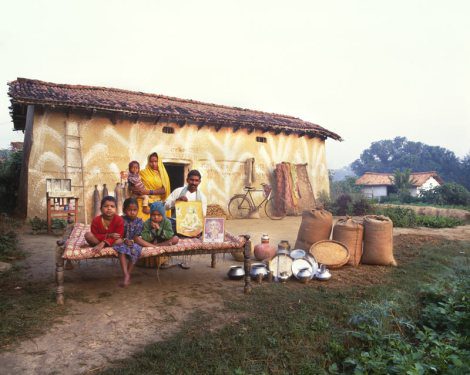
25-year old Mashre Yadev had her first child when she was 17 and is now mother to a total of four. Every morning, she draws water from a well so that her older children can wash before school. She cooks over a wood fire in a windowless, six-by-nine-foot kitchen, and such labor-intensive domestic work keeps her busy from dawn to dusk. Her husband Bachau, 32, works roughly 56 hours a week, when he can find work. In rough times, family members have gone more than two weeks with little food. Everything they own — including two beds, three bags of rice, a broken bicycle, and their most cherished belonging, a print of Hindu gods — appears in this photograph.
Image copyright Peter Ginter
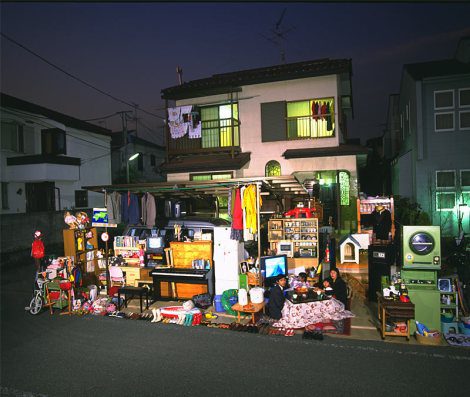
43-year-old Sayo Ukita had children relatively late in life, like many Japanese women. Her youngest daughter is now in kindergarten, not yet burdened by the pressures of exams and Saturday ‘cram school’ that face her nine-year-old sister. Sayo is supremely well-organized, which helps her manage the busy schedules of her children and maintain order in their 1,421-sq-foot Tokyo home stuffed with clothes, appliances, and an abundance of toys for both her daughters and dog. Despite having all the conveniences of modern life, the family’s most cherished possessions are a ring and heirloom pottery. Their wish for the future: a larger house with more storage space.
Image copyright Peter Menzel via PBS | www.menzelphoto.com
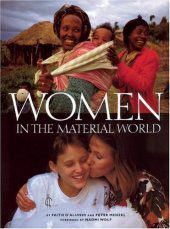 Originally published in 1995, Material World was a massive undertaking that cost Menzel $600,000, which he scrapped together by refinancing his house, maxing out all his credit cards, and patchworking various small loans from friends — a feat in and of itself, and curious meta-evidence for the material world we live in, where even creating meaningful social commentary on materiality and excess has an excessive material cost of its own.
Originally published in 1995, Material World was a massive undertaking that cost Menzel $600,000, which he scrapped together by refinancing his house, maxing out all his credit cards, and patchworking various small loans from friends — a feat in and of itself, and curious meta-evidence for the material world we live in, where even creating meaningful social commentary on materiality and excess has an excessive material cost of its own.
And for an excellent companion read, see Menzel’s 1998 follow-up, Women in the Material World — a fascinating look at an even more intimate aspect of the human family.


